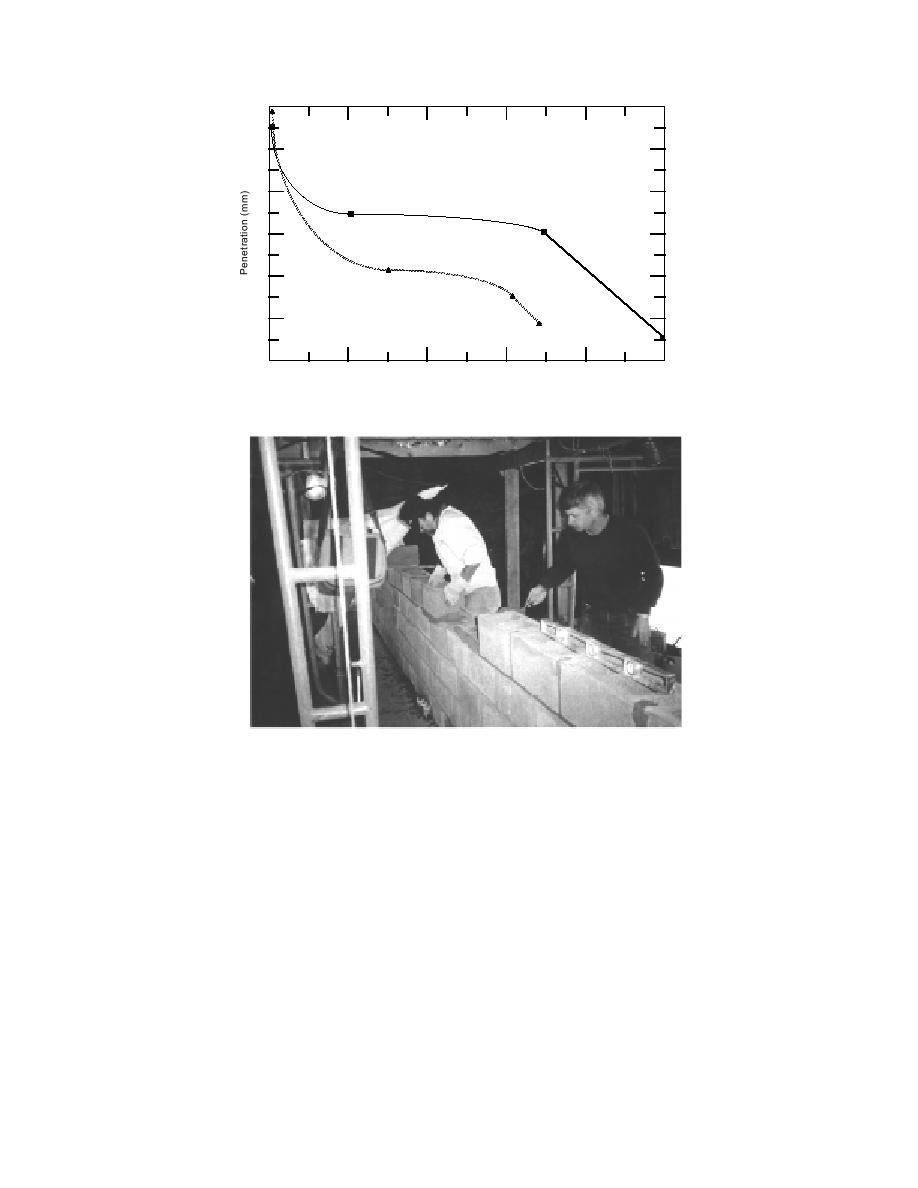
38
36
34
KC1
32
Control
30
28
26
0
10
20
30
40
50
Time (min)
Figure 19. Penetration of mortar with and without the antifreeze admixture.
Figure 20. Building the wall.
masonry construction techniques. The mortar
antifreeze mortar batches were not retempered.
was tooled concave when it was thumbprint
For construction of the wall section (Fig. 20) on
hard. The masons found that the admixtured
the cold side, masonry units were transferred
mortar adhered very well to the masonry units
from the heated enclosure and used immediately.
and that it remained workable much longer than
The mortar made with KC1, once mixed, was
did the conventional mortar; this was probably
placed in the cold side and used within about 50
due to the differences in air temperature. Figure
min.
19 compares the average penetration of the three
conventional mortars (on the warm side) to the
Thermal history
average penetration of the three admixtured mor-
Mortar and air temperatures were recorded
tars (on the cold side) over time. Due to the lower-
every 5 minutes for seven days. Thermocouples
than-average initial mixing moisture content, the
in each side of the shelter monitored tempera-
cone penetrations for the fresh mortar averaged
tures in the mortar beds between masonry units,
in 5 10 cm (2 4 in.) mortar cylinders, and in the
about 38 mm (1.5 in.). The masons retempered the
mortar when its penetration dropped to about 28
air next to the walls. The temperature of the mor-
mm (1.1 in.). The three batches of conventional
tar cylinders, which were stored adjacent to the
mortar were each retempered once, but the two
wall sections, was nearly identical to that in the
24



 Previous Page
Previous Page
